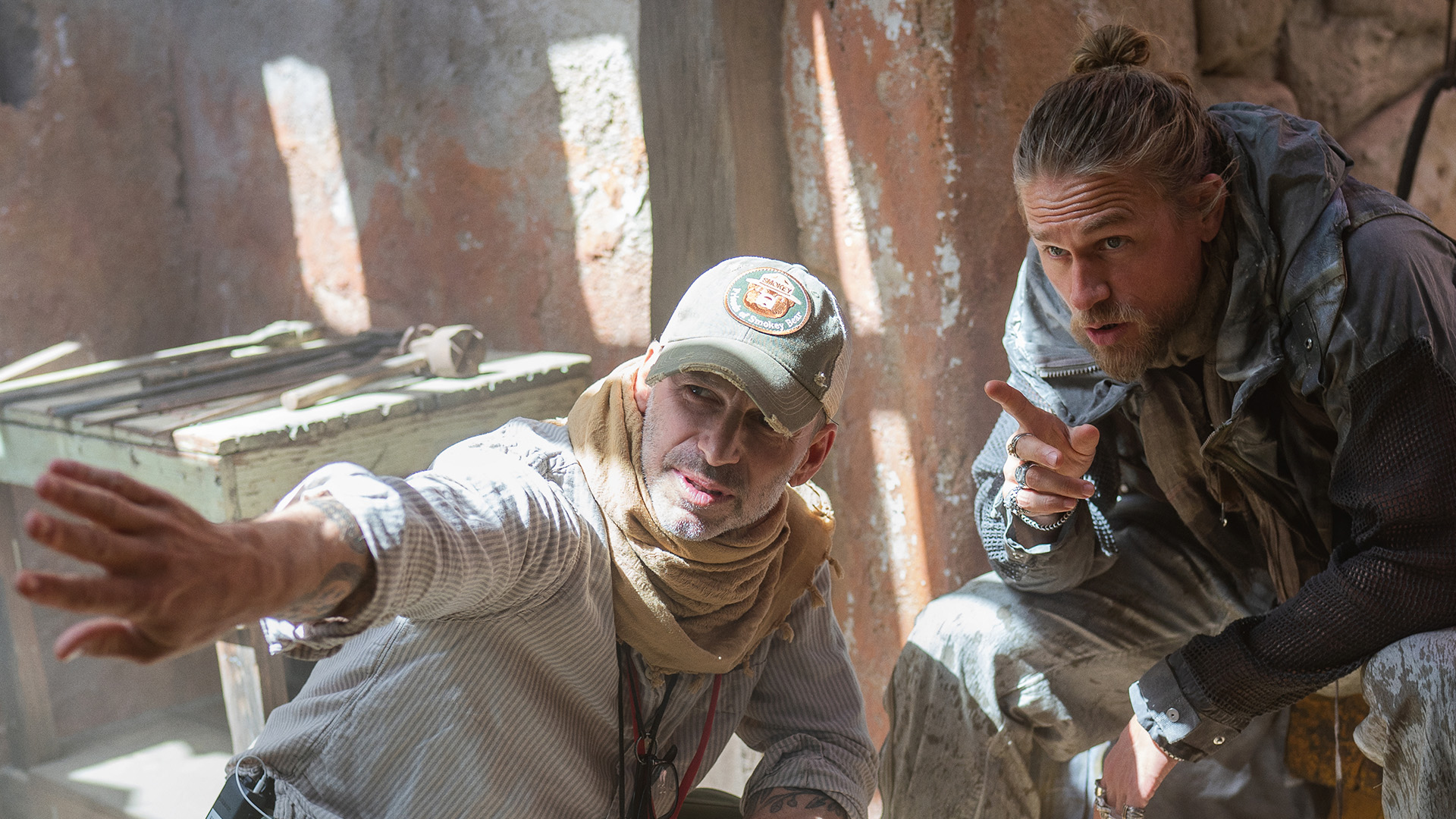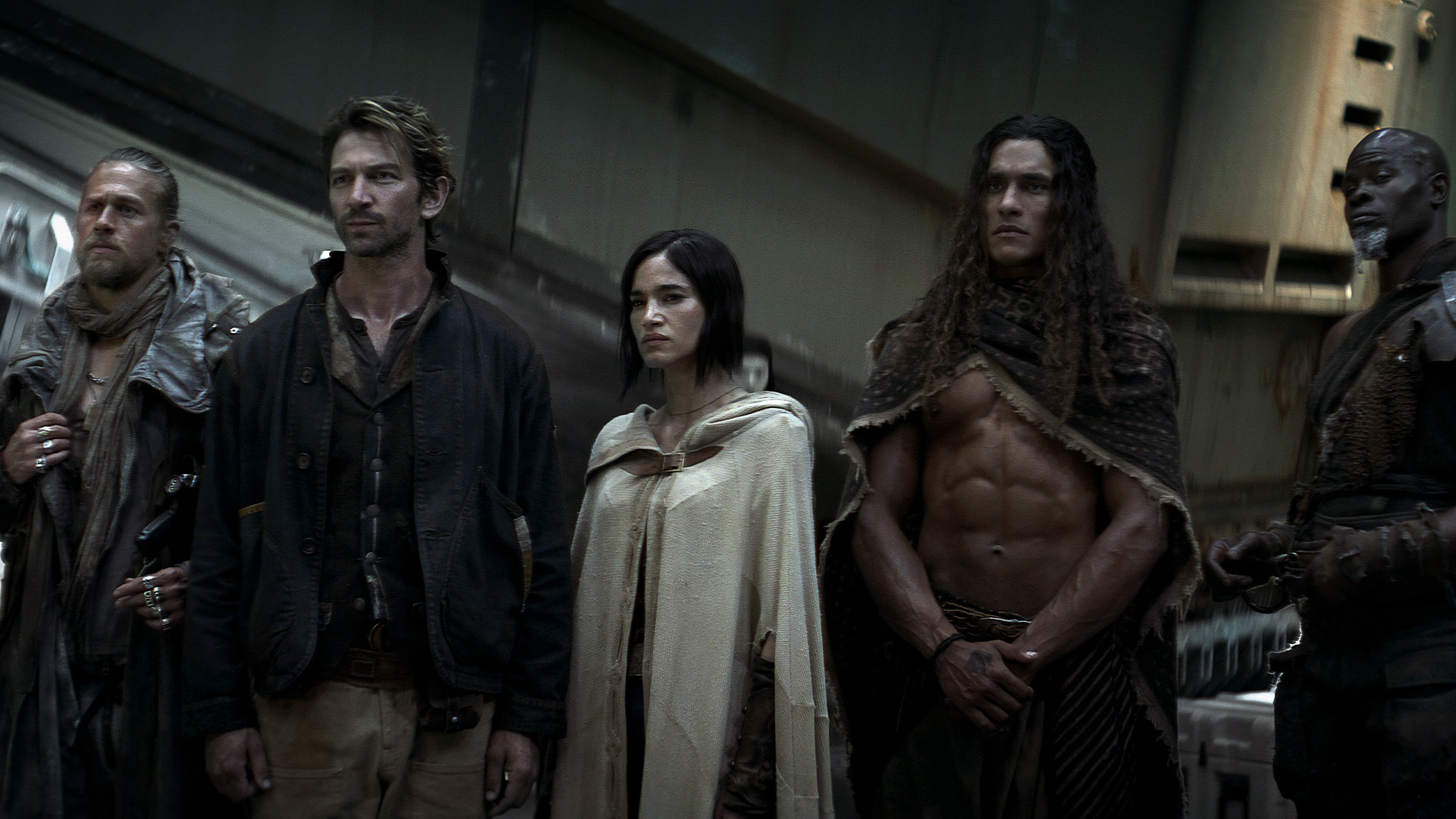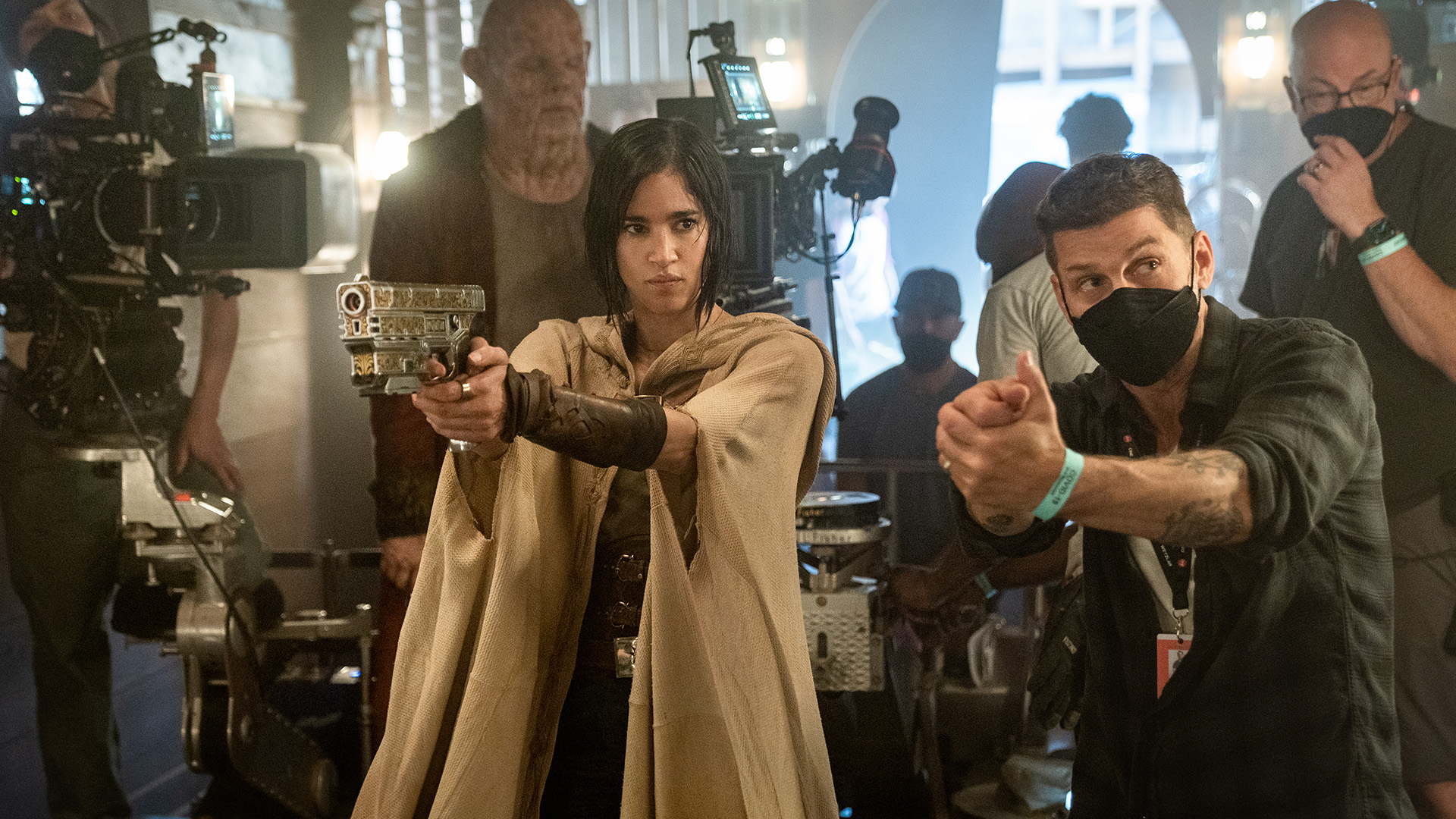“What about Dirty Dozen… in space?” Zack Snyder talks dark space opera riff Rebel Moon

A squad of heroes is recruited to protect a peaceful planet in Zack Snyder’s latest, the first of two Rebel Moon movies for Netflix. Speaking with Travis Johnson, Snyder spills on the “hardcore, super-rough” version of the film, Kurosawa’s influence, and more.
If you’re working in the arts, it’s always a good idea to keep more than iron in the fire—you never know which project will get the green light.
Rebel Moon director Zack Snyder knows this better than anyone. His latest project has been bubbling away on the back burner of his brain for decades, even as he delivered the likes of Dawn of the Dead, 300, and the overwhelming bulk of the DC Extended Universe. Certainly, everyone has heard about how the Watchmen honcho once pitched it to Lucasfilm as a potential Star Wars spin-off, but the roots run deeper than that.
“When I was in college, I was in this class where we had to take a story and set it in another environment as a pitch concept,” recalls. And I thought, ‘What about Dirty Dozen… in space?’ I remember saying that to my teacher and he said, ‘Yeah, for sure, but how do you land something like that?’ It’s easy to say, but it takes a lot of world building, basically.”
Now, decades later, Rebel Moon is coming to us from Netflix, with the first instalment, Rebel Moon – Part One: A Child of Fire debuting on the streaming giant on November 22, and Rebel Moon – Part Two: The Scargiver due in April 2024.
A dark space opera riff on Akira Kurosawa’s 1954 classic Seven Samurai (pedantic nerds will know that Star Wars was partly inspired by Kurosawa’s The Hidden Fortress, of course) the film sees Sofia Boutella’s mysterious former soldier, Kora, set out to recruit a squad of heroes, including Charlie Hunnam’s rogue, Djimon Hounsou’s former general, and Bae Doona’s sword-wielding wanderer to protect the peaceful moon of Veldt from Ed Skrein’s deliciously evil space-Nazi, Atticus Noble.

It’s only Snyder’s third original film out of the 10 features Snyder has directed to date (11 if you count both Justice Leagues), with the rest being adaptations or franchise entries. But in its own way, Rebel Moon is an adaptation—it’s a distillation of all the cool genre influences that hit a young Zack hard back in the day.
Indeed, as he explains to us, while the project went through many iterations over the years, the desire to synthesise those cultural touchstones into one epic whole remained constant.
“Yeah, I feel like this sort of the science fiction/fantasy universe, this idea of something influenced by—in the same measure—Seven Samurai, as Excalibur, as Milius’s Conan the Barbarian, as Blade Runner and Star Wars.” He reflects. “That idea—just these movies that shaped my aesthetic, that idea has really been persistent. I think that notion has really been the thing that has kept it alive for me.”

Even as he worked on some of the biggest blockbusters of the last 20 years, what would become Rebel Moon was always at the back of his mind. “In all my quiet moments, it always kind of pops up and goes like, ‘Hey, what about that? Remember that cool thing we were going to do? Let’s do it!’ So yeah, in that way, it just hasn’t left me alone.”
But among the many influences in Rebel Moon’s mix, it’s Akira Kurosawa that stands as the most prominent. Not just because his film provides the narrative bones—Seven Samurai begat The Magnificent Seven, A Bug’s Life, and even Snyder’s own take on Justice League—but in terms of style. You can see the echo of Kurosawa’s use of slow motion in Snyder’s signature speed-ramping action beats, and they share a love of carefully composed visual tableaux with multiple planes of action.
“Yeah, I feel like he’s very much huge influence as well,” Snyder agrees. “You know, the way he would do his watercolours and be inspired, the things he was searching for through art and drawing—you know, for me that’s the same. I have a very similar process and I think that that just from a process standpoint he’s incredibly inspiring.”

But Kurosawa never got to release multiple versions of the same film, a privilege that Netflix has afforded Snyder for Rebel Moon. The version of A Child of Fire we’re getting now is optimised for a wider audience, but a bloodier, more bombastic, and much longer cut is due in January—an attempt to please Snyder’s hardcore fans (you know who you are) and more casual viewers alike. The Scargiver is getting a similar treatment.
Director’s cuts and special editions are nothing new, of course, but it’s rare for a director to know he’ll be getting the opportunity to expand his work and plan accordingly.
“I know I have the other hardcore, super-rough version that’s sitting over there, it allows me to be much more strategic,” Snyder explains.
”Actually, it’s liberating for me to have that because in the past when I would pull something out of the movie and there was no guarantee of a director’s cut, I was losing it forever. It was really difficult and the fight with the studios would be very real. Whereas, in this case, they’ve allowed me to be really choosy about how I sculpt it.”

And Netflix has been more than accommodating, it seems. “When we did the extended versions, the studio was so behind it that they gave me additional resources to shoot scenes that weren’t ever even going to be in this version, so it was quite fun to work with.”
It’s hard to believe the young Zack Snyder dreaming up his “Dirty Dozen… in space!” treatment could ever have imagined how far his pulpy noodlings would take him, but the Zack Snyder of 2023 certainly seems happy about it. And so he should be.


















